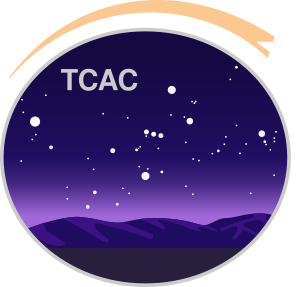
|
Tri-City Astronomy Club
|
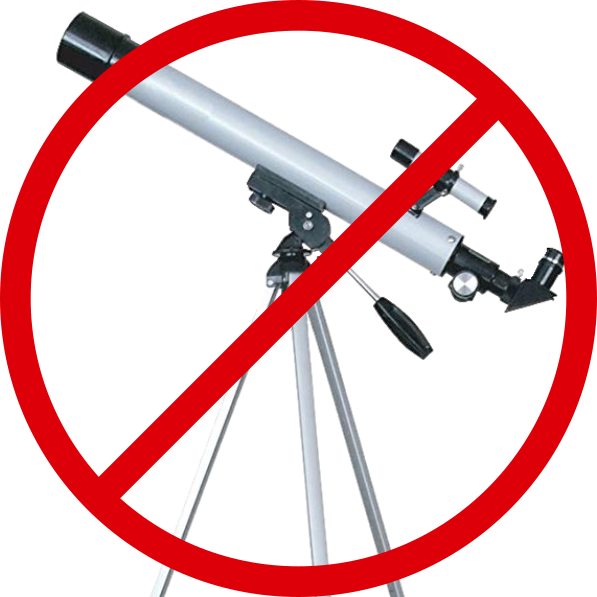
First off: Do not buy a telescope like this! You can find them at Walmart, Best Buy, and other department stores, and they plaster the internet. But, a telescope like this is so hard to use for astronomy that it is actually worse than nothing at all.
The good news is that a real telescope doesn't cost much more!
I sold all types of telescopes for four years and taught people how to use them, so I know what works. I have been doing astronomy myself for more than 20 years, and teaching it almost as long.
Most guides tell you all the differences between the types of optical systems, and what each one is best at. This guide ignores that distinction because it doesn't matter: The differences will be too slight to notice until you have a lot of experience. Actually, the most important part of a telescope system is the mount! A good telescope on a poor mount cannot be aimed and will be useless. A bad mount is what makes telescopes from department stores worthless (though their optics aren't great either).

This mount moves in tilted circles. There is one main advantage to this type, and that is tracking. It is easy to make the telescope follow a target because one of the mount's motions traces the path of objects across the sky. Sometimes this is done with a slow motor. There are some issues though. First, you have to get the mount aligned properly before you begin, or you lose your only advantage. Second, the mount is complicated and not intuitive to use. And third, the mount has to be up on a tripod making it subject to vibrations which will get magnified along with your image. This type of mount may be what most people have in mind when they think of a telescope, but it's not what I recommend.
Alt/AzAlt/az stands for altitude and azimuth. That is a fancy way of saying that the business end of the telescope moves up and down, and left and right. This kind of mount is intuitive to use, and you can master it in five minutes. It does not track the sky, but you can nudge it along when you need to. Alt/az mounts can be on tripods, but they usually aren't.
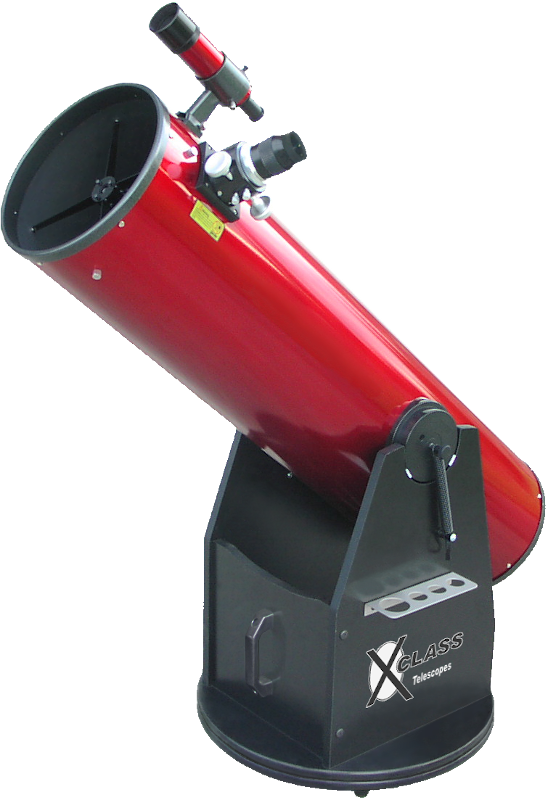
This special type of alt/az mount was developed to be cheap and easy to build, but it also has the advantage of being sturdy and solid. Telescopes of this type rarely vibrate noticeably, and they can be made to be huge. The vast majority of amateur astronomers own Dobsonians, and that will be my recommendation.
Push-ToThis is a manual scope, usually a Dobsonian, with a read-out to tell you which way to move to find your target. This requires extra set-up and alignment, which defeats the purpose of having an easy-to-use telescope. Also, it doesn't work as well in practice as it does in theory, so I don't recommend one. (There are third-party systems made to add onto existing scopes that do work well, but they cost more than most telescopes.)
AutomaticThese electronic mounts can be equatorial or alt/az, but it won't matter to you because the mount will move on its own! Modern mounts do most of the alignment work by themselves, but you still may find yourself reading the manual at first. You will also have to be ready to travel with batteries or a generator. The big advantage is automatic tracking: Despite the turning of the earth, your target doesn't drift out of the eyepiece. These mounts are also supposed to point automatically, though in practice, it's common for them to miss the target and require some manual adjustment. These mounts can be nice to have, but cost about five times as much for exactly the same view. I recommend starting with something less expensive.
Get a 10-inch Dobsonian. It may be the only telescope you ever need. There are hundreds of objects to look at that show good details, and almost any adult can carry one around. There are reasons why a smaller size might be a better choice for you though. If you are on a tight budget, a 6-inch would be better because it costs half as much as a 10. Also, if you are buying for a child, they won't be able to carry around a 10-inch scope. They would be better off with a 6-inch or even a 4½-inch. Before buying a 6-inch telescope though, be sure to check out the comparison chart and see if you would be satisfied with the view! If a 10-inch is too big, and a 6-inch too small, another common size is an 8-inch, which would also be a fine choice.
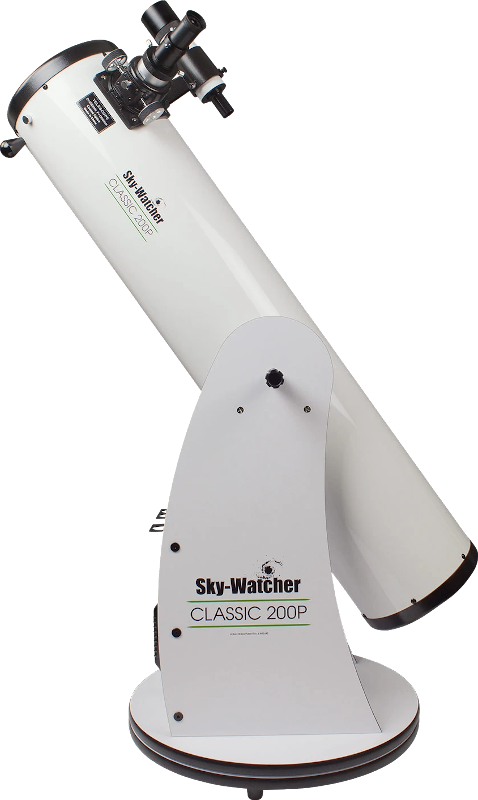
I recommend a SkyWatcher Traditional Dobsonian, an Apertura Dobsonian, or a Zhumell Delux Dobsonian. These all come from the same factory, which has been selling decent optics at very low prices for a while. (Orion Telescopes introduced these scopes to the U.S., but now sells a cheaper knockoff from a different place under the XT brand. They are still acceptable if you get a good deal.)
At the time of writing (September 2023), the 10-inch SkyWatcher is usually $900. The 6-inch is harder to find, but some companies are still selling them for $460. SkyWatchers prefers to list their scopes in millimeters, so the 10-inch is 250mm, and the 6-inch is 150mm. (I'm not providing links to stores in this guide because they would be moving targets.) Zhumell and Apertura Dobsonians cost more, but do come with more and better accessories. If you are in Tri-Cities Washington like us, and you want to buy a scope in person, you will have to go west. A store in Seattle called Cloud Break Optics carries SkyWatchers.
Is That It?
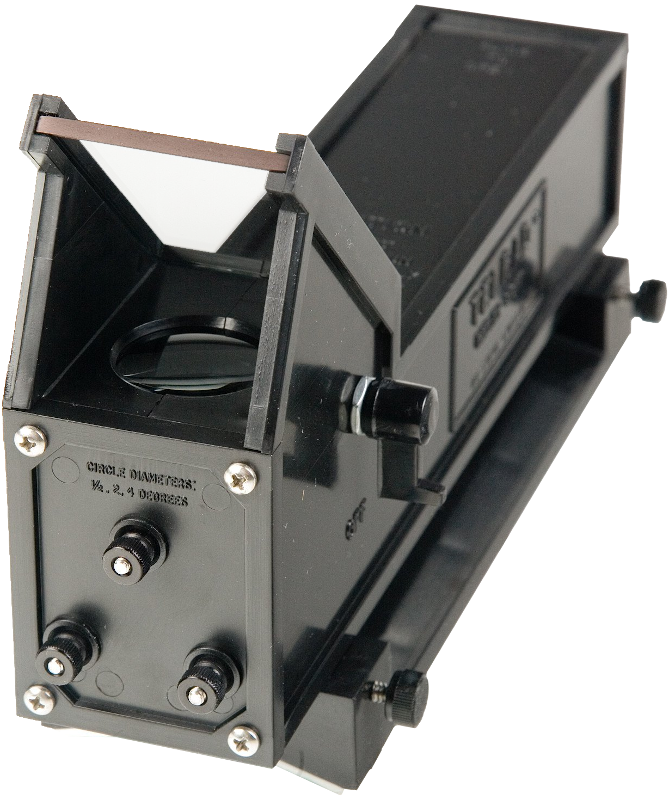
|

|

|
What you do need from the beginning is a Telrad and a book of finder charts. A Telrad is a finder with a small heads-up display. You see these on everything from 4-inch reflectors up to professional observatory scopes. They make finding a target so easy that almost everyone has one. There are other similar devices, but this is the standard one.
In addition, you need something that tells you where to point! A phone app is a bad idea because the screen will hurt your night vision — even in night mode. I recommend a book called "Finder Charts of Bright Telescopic Objects" by Brent Watson. Also, if you don't know the constellations, you will have to learn them. For that, I recommend another book called "The Stars: A New Way to See Them" by H. A. Rey.
Special CaseIf you are getting a telescope for a group such as a classroom or a large family, and the price isn't a major consideration, it would be better to go with an electronic mount. That way, nobody has to adjust it between viewers because the tracking is automatic. Just beware of the learning curve!
What About Photography?Don't let the idea of taking photos influence your decision of what telescope to get. Astrophotography is basically a different hobby, and it works best with a very different kind of telescope. It has its own steep learning curve, so trying to learn both hobbies at the same time is going to cause a lot of frustration. Besides, most astrophotographers have a telescope just for looking through in addition to their photography setup, so just get the visual one first!